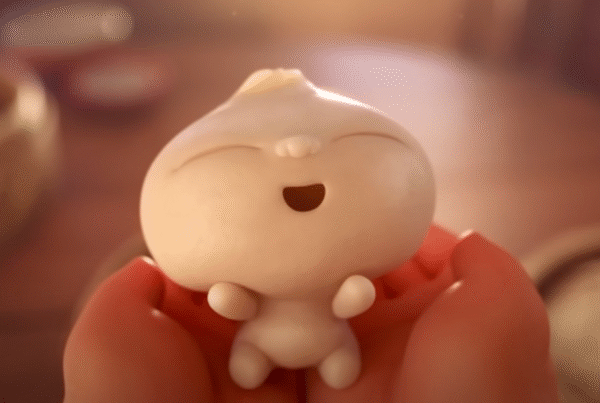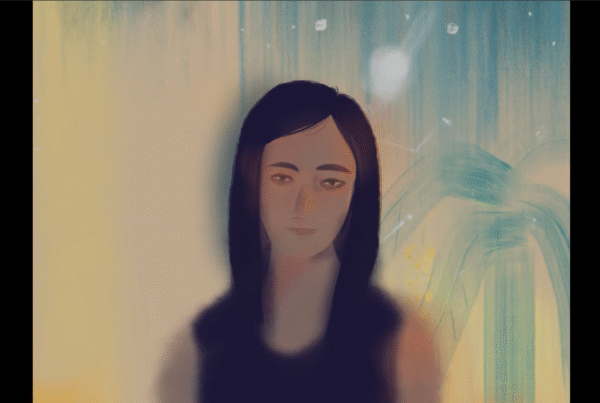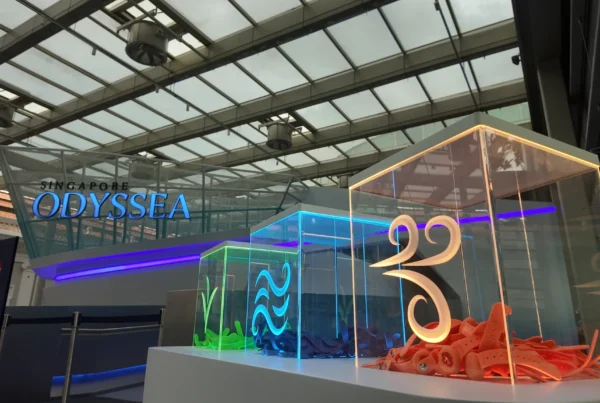Netflix’s KPop Demon Hunters: Animation & Marketing Magic
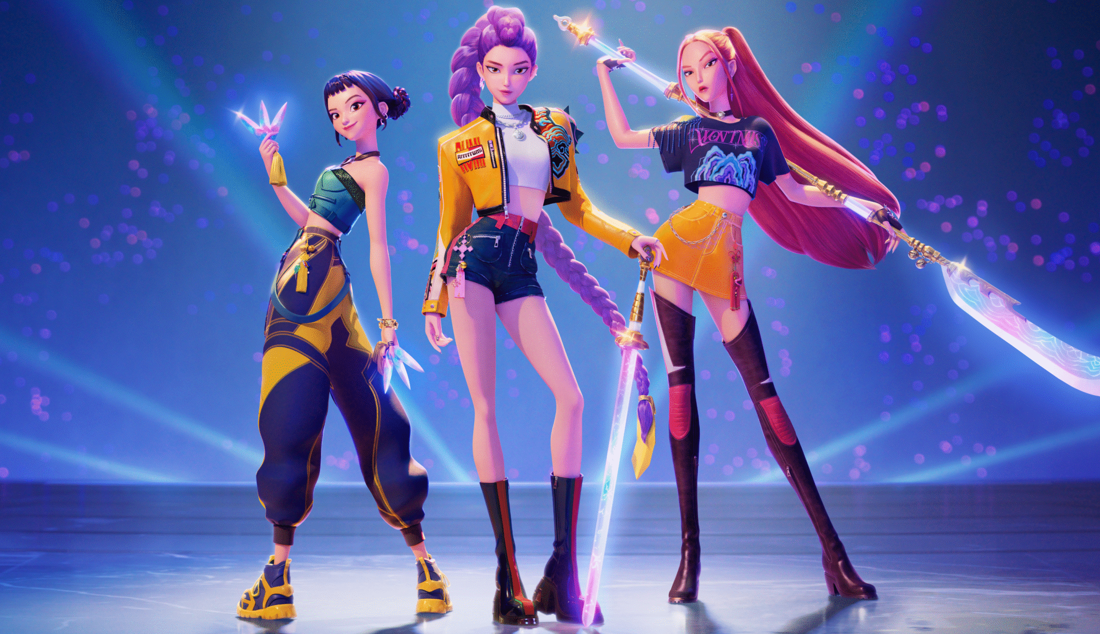
In the summer of 2025, households across the world were taken by storm when KPop Demon Hunters made its debut on Netflix. It had everything people had ever wanted from an animated film, combining sophisticated visuals with catchy music that goes toe-to-toe with real life K-pop hits. Add to that the mysticism of its storyline and the smart marketing around the film’s release, and Netflix has a hit on their hands.
By August, KPop Demon Hunters surged past Red Notice for first place on Netflix’s most watched list, racking up 236 million views globally. It became the most watched Netflix movie of all time, with multiple tracks from its soundtrack performing well on the Billboard charts to boot.
As a Singaporean animation studio, we like to delve into movies and TV shows such as Solo Leveling and Arcane to find out what makes them tick. Sometimes it’s a marketing strategy, like with Cyberpunk: Edgerunners or the stunning fight sequences in shows like Solo Leveling. Whether by luck, craft, or marketing strategy, this article explores what makes KPop Demon Hunters stand out and what animation studios, sound & voiceover recording studios, and anyone interested in pop culture can learn from it.
Striking Visual Style
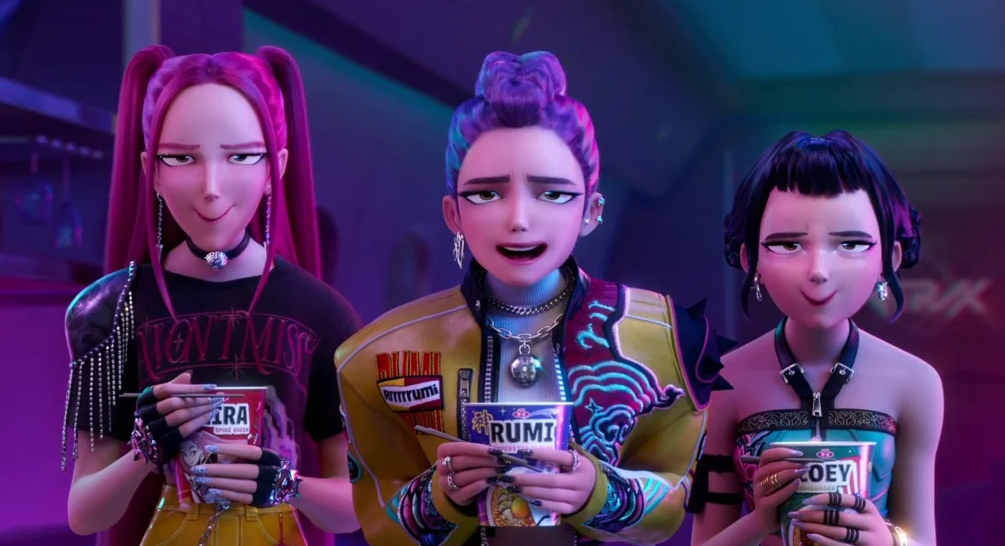
KPop Demon Hunters does something really smart with their animation style: it pulls familiar cues from anime aesthetics and gives them a fresh spin. Things like facial expressions, exaggerated reactions, stylized lighting and dramatic camera setups strike viewers with a comforting sense of familiarity, as the film reinterprets these cues in full 3D animation.
Directors Maggie Kang and Chris Appelhans drew inspiration from music videos, K-dramas, concert lighting, and even editorial photos for the overall look of the film. They wanted to showcase a strong Korean cultural identity in the visuals, along with an editorial, fashionable flair.
Watching the film, you’ll notice an emphasis on lighting, particularly on lighting faces well, and setting the mood through the colours shown on screen. Pair that with a variety of lens effects, dramatic, sweeping movement, and the sheer glamor of the setting, and the film is guaranteed to be visually striking.
All of this is done alongside very grounded character designs. Each individual has their own established personality that comes across even in the little details; their posture, how their hair sits, the way they move.
Unlike films like Spider-Man: Into the Spider-Verse, KPop Demon Hunters doesn’t lean into a hybrid 2D and 3D design. Instead, it goes all in on 3D animation, but imbues it with a 2D sensibility when it comes to faces, expressions, and framing.
Characters and Storytelling
Rumi, Mira and Zoey are members of the Kpop group Huntr/x (or Huntrix). By day, the trio are idols, leading glamorous lives as one of the biggest Kpop groups around. However, they secretly lead second lives as warriors of the supernatural: demon hunters.
The push and pull between their public and private lives sets up plenty of tension for the plot to bite into, given the inherent contrast between their flashy day jobs and their secretive supernatural sides.
While their lives as idols are based on real Kpop idols, with the characters themselves having been modeled after girl groups such as Twice, BlackPink, and 2NEI, their demon hunter personas are rooted in Korean folklore.
This imbues the storyline with a sense of realness, derived from common childhood stories viewers may have grown up hearing. This ground the film, making it easier to suspend your disbelief at the more fantastical points.
It combines visual spectacle and emotional character work gracefully – You care as much about the breathtaking music and action as you do the characters’ struggle with their identity and their friendship. In fact, the character arcs help anchor the more ambitious visual moments even further, and the mix of glamor, demonic combat, comedy, music, and emotion keeps the film engaging from start to finish.
The Creative Team
Many will recognize Sony Pictures Animation as the same studio that brought Spider-Man: Into the Spider-Verse and its sequel to theatres. Sony Pictures Imageworks’ Josh Beveridge, who led character animation for Spider-Man, served as the animation director of KPop Demon Hunters.
But this film isn’t just Spider-Man: Into the KPop-Verse. In an era where so much of animation (and Hollywood in general) leans on reboots, remakes, or never-ending franchises, KPop Demon Hunters stands out by standing alone. It’s not adapting any existing IP, nor is it part of a wider, established cinematic universe. KPop Demon Hunters is its own thing.
One of the directors of the film, Maggie Kang, spoke about wanting the project to be a love letter to Kpop and to her Korean roots. The team brought together style, fashion, and cultural detail, digging into Korean mythology, folklore, and demonology, some centuries old, combining it with the sleek modern pop aesthetics of Korea today.
It created something new, unique, and wholly surprising.
Connecting with Fans
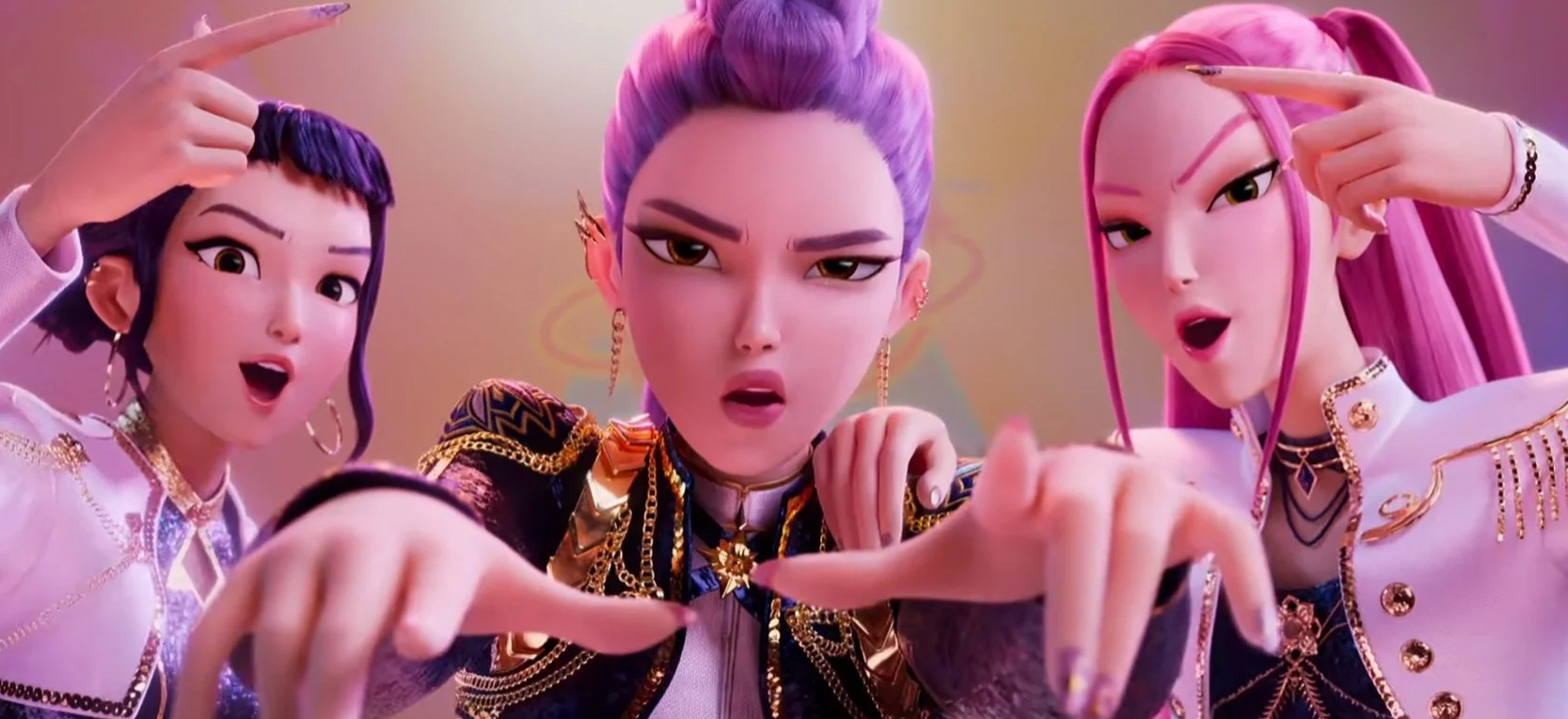
Even with its stellar animation taken into account, KPop Demon Hunters wouldn’t have been able to climb to the top of Netflix’s list of all-time most-viewed movies without an impressive marketing machine behind it.
The film’s central premise is attention grabbing – who doesn’t want to watch demon hunting Kpop idols?! It taps into the real life spectacle of idol culture, with the added drama of the supernatural. Add to that the universal appeal of music, fashion, and good old high stakes action, and you have a premise that connects with a lot of people.
The characters themselves are relatable in their own ways. Besides being famous idols, they’re also friends, underdogs, rivals, and more. It’s easy to see yourself in them even if you’re not a famous singer/supernatural warrior.
It also doesn’t hurt that nowadays, Kpop is far from niche. Its global influence is huge, and by riding that wave, Sony and Netflix were able to lean into Korean culture in a way that felt both authentic and flashy enough to scale globally. Kpop isn’t shoehorned in for views, it actually connects with fans of the genre.
Fan Culture’s Role
With perfectly meme-able expressions and ear-worm songs that everyone was listening to for weeks on end, the studios allowed fan culture to take over completely.
Fan edits, gifs, memes, and cosplay of the characters were everywhere, and the bold graphic style of the film was always easily recognisable. On the music front, songs like “Golden” and “Soda Pop” have become hits, with their music videos raking in hundreds of millions of views, comparable to the numbers of some of the biggest stars in Kpop today.
Multiple tracks from the movie even reached the Billboard Hot 100’s coveted top 10 spots. In many markets, the chart success of the singles served as another way for people to discover the film, and when they did, they were treated to a sea of content about it. People posted reaction videos, shared fan theories about the story’s lore or easter eggs, and dressed up as characters from the story. The fan culture surrounding the film undoubtedly helped propel it even further.
Netflix’s Promotion Strategy
Booming fan culture aside, this isn’t to say that promotion was left to chance. Much like how an actual Kpop group would debut, promotions released trailers that teased the visuals of the film and the more mythical aspects of the story, with strategic early reveals of the character designs and soundtrack releases meant to build awareness and hype.
It doesn’t hurt that Netflix was able to utilize its “Top 10” status to keep KPop Demon Hunters visible on its main page.
To promote the film even further, it received a short theatrical run, with a sing-along version of the film available for audiences to catch in theatres. While Netflix is typically streaming-first, the theatrical run granted the film a little more cultural cachet than your typical direct-to-streaming movie, and further visibility in key markets such as the US and Canada.
In-Universe Marketing
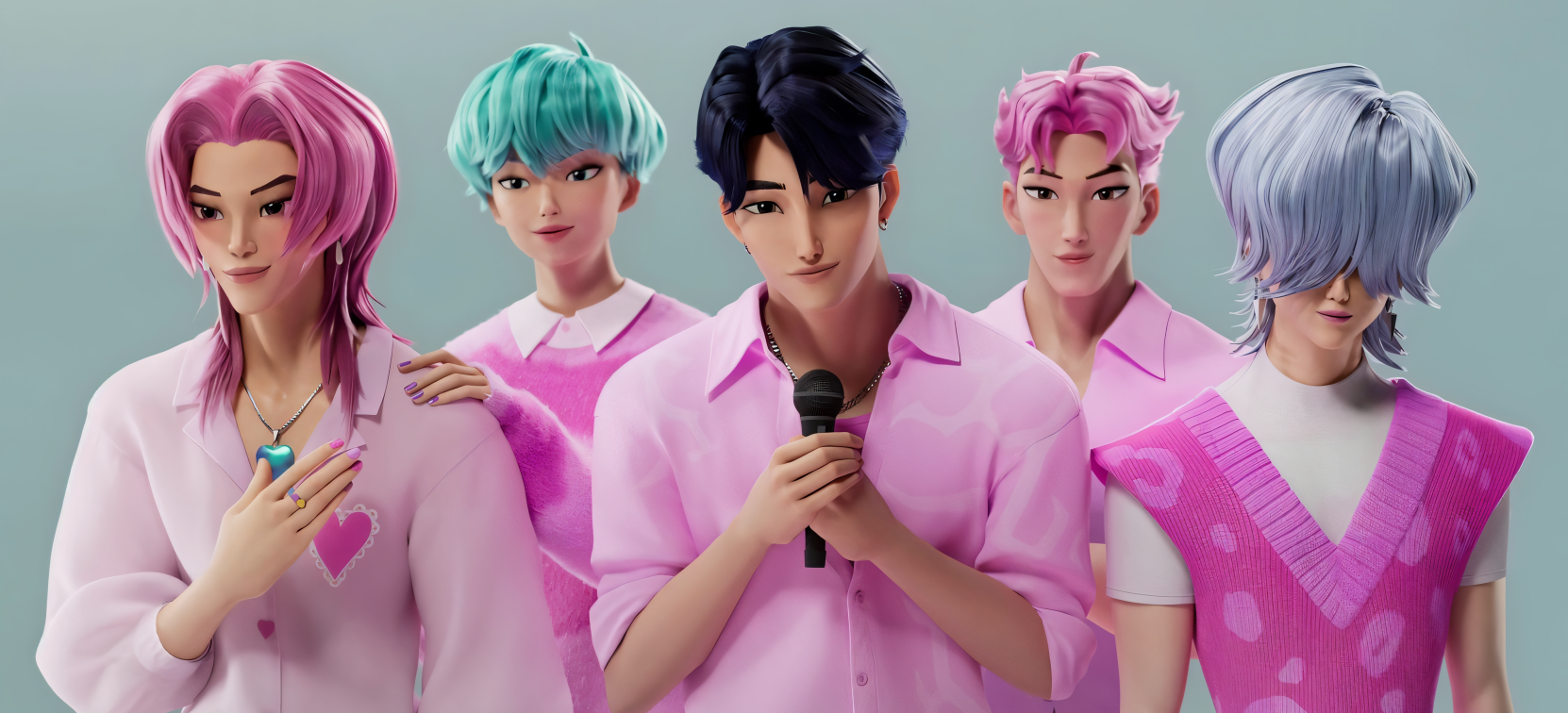
The Huntrix were marketed just as well as a real pop group – from brand deals, to chart-topping music sung by real performers, audiences can be drawn into the universe of the film with this multiple-prong approach. In other words, the story is fictional, but the good music is real.
In addition, the film is littered with easter eggs and lore, with character designs tied to cultural details and demonology, which encourages deep dives and fan theories, increasing the interactivity of the fandom.
Why It Works
So why does it work? KPop Demon Hunters puts together marketing and animation in a way that garners global attention. We can distill it down to the following points:
- Style and Strategy Alignment
Every bit of the promotional material echoed the visual tone of the film. It wasn’t just pretty animation in a vacuum, it reinforced the marketing at every turn and let audiences know exactly what to expect, from bold visuals and catchy music, to a mythical demon angle not often paired with such a bright aesthetic. - Emotional Resonance with Fandoms
Kpop and Kdrama fans, and on a broader scale, fans of Asian culture in general, were able to see a part of themselves and their interests depicted in the film without it being a punchline as it sometimes can be. As director Maggie Kang said, the film was a love letter to Kpop. At the same time, those outside the fandom wouldn’t find it hard to connect to the film regardless. It both sounds and looks beautiful, and the emotional stakes and character arcs are universal enough that you don’t have to be a Kpop fan to get invested. - Cultural Crossover
It’s not just Kpop fans either, the style of film along with the incorporation of myth and folklore helped tap into another cultural juggernaut: anime fans. Pair that with the sheer force of Kpop fans, and the film was able to have a global reach. - Shareability
Everything from the songs, the character design, their outfits and expressions, along with the visuals of the film as a whole, lend themselves to being shared across social media platforms. From TikTok and Instagram, to even Pinterest. The soundtrack alone is able to reach new people, pulling in new viewers as a result. - Originality
People are beyond hungry for something new. Something that isn’t a sequel or a spin-off. In a world where all your childhood animated classics are being remade in live-action, having a fresh, genre-bending animated original presented to you on a silver platter feels a bit like a miracle. People want to watch original content. They want to talk about original content and share it with their friends, too.
Conclusion
KPop Demon Hunters is a shining example of what can happen when animation, culture, storytelling, and marketing come together. For animation studios or VFX studios such as ours, the film’s success simply confirms that risk and originality are still able to pay off in big ways.
When you combine masterful creative execution and a marketing strategy that aligns with it both visually and thematically, you make an impact that goes beyond the amount of viewers and into the sphere of cultural relevance.
If you want to learn more about animation, or if you’re interested in diving into the industry yourself, CraveFX is here to help you. Check out our VFX Studio today and get started on your animation journey.

